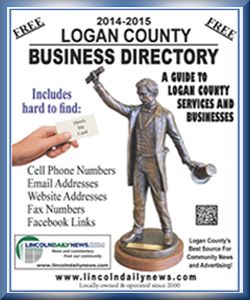|
Fed begins policy exit
talks, split on view of U.S. job market
 Send a link to a friend
Send a link to a friend
[May 22, 2014]
By Michael Flaherty and
Howard Schneider
WASHINGTON (Reuters) -
Federal Reserve policymakers last month began laying
groundwork for an eventual retreat from easy monetary
policy with a discussion of how to best control interest
rates as they remove trillions of dollars from the
financial system.
|
|
 No final decisions were taken, and minutes of the session, released
on Wednesday, said the Fed was merely engaged in "prudent planning"
and not signaling it was ready to "normalize" monetary policy or
raise interest rates any time soon. No final decisions were taken, and minutes of the session, released
on Wednesday, said the Fed was merely engaged in "prudent planning"
and not signaling it was ready to "normalize" monetary policy or
raise interest rates any time soon.
Still, the discussion at the central bank's April 29-30
policy-setting session, coupled with fresh comments by top
officials, show an intensifying discussion over both exit-strategy
details and a developing split over basic analysis of the U.S.
economy.
The next policy meeting will be in mid-June, when the panel will be
joined by Stanley Fischer, the former Bank of Israel governor whose
nomination to the Fed's board was confirmed on Wednesday by the U.S.
Senate. The Senate has yet to act on his separate nomination to be
Fed vice chairman.
Though the economic forecasts reviewed at the April meeting remained
upbeat, the minutes indicated general agreement that any sustained
uptick in inflation was still perhaps years off.

Minneapolis Fed President Narayana Kocherlakota said on Wednesday he
did not think the Fed's preferred measure of inflation would reach 2
percent until 2018, an argument for leaving loose monetary policy in
place. He said the economy's struggle to regain steam might even
argue for easing policy further by committing to drive inflation
above the Fed's 2 percent target to make up for lost ground.
Participants in the meeting undertook an apparently wide-ranging
discussion about U.S. labor markets, dissecting research that
suggests a falling share of short-term unemployed could prove an
inflationary spark even with long-term joblessness running unusually
high - a finding a number of officials said they considered suspect.
Indeed, sluggish wage gains were cited as one indication that the
labor market could have more slack than the nation's 6.3 percent
jobless rate suggests.
Other officials, however, offered warnings. "Some participants
reported that labor markets were tight in their districts or that
contacts indicated some sectors or occupations were experiencing
shortages of workers," the minutes reported.
[to top of second column] |

CRISIS ERA DRAWING TO A CLOSE
The discussion over how to exit the Fed's highly accommodative
policy, once the time comes, is the latest sign that the era of
near-zero rates and heavy bond buying is drawing to a close. Having
pumped trillions of dollars into the financial system, the Fed must
now develop tools to siphon them out as part of the eventual
decision to raise target rates.
"Participants generally agreed that starting to consider the options
for normalization at this meeting was prudent," the Fed said. It
added that the discussion "did not imply that normalization would
necessarily begin sometime soon."
Investors expect the Fed to raise rates in the middle of next year
at the earliest, and expectation that was little changed by the
central bank's latest minutes.
(Reporting by Michael Flaherty and Howard Schneider; Additional
reporting by Ann Saphir in San Francisco and David Gaffen and
Richard Leong in New York; Editing by Tim Ahmann, Paul Simao and
Chizu Nomiyama)
[© 2014 Thomson Reuters. All rights
reserved.] Copyright 2014 Reuters. All rights reserved. This material may not be published,
broadcast, rewritten or redistributed.

 |